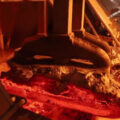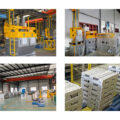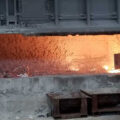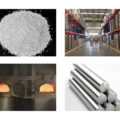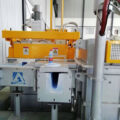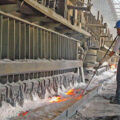To produce high-quality double zero aluminum foil, it is necessary to strictly control the residual hydrogen content in the aluminum foil blank. Aluminum melt purification process can reduce the formed bubbles, and reduce its influence on the processing performance of the aluminum foil.
In the current industrial production process, the hydrogen content of aluminum foil blanks should generally be controlled within 0.08 ml./(100g Al) ~0.12mlL./(100g Al). Taking effective refining and online degassing measures, the hydrogen content measured in actual production can reach 0.10mL/(100g Al) or less.
Inclusions are an important reason for pinholes and tape breaks in aluminum foil. The pinholes caused by inclusions are not distributed regularly in the aluminum foil, and the pinholes produced by the inclusions are larger. For double zero aluminum foil, any inclusion particles larger than 0.005mm will form pinholes. Therefore, paying attention to melt purification, optimizing the melt purification process, and ensuring the quality of the melt are the key to controlling the pinholes of the double zero aluminum foil.

In order to remove the inclusions in the aluminum melt, the melt is refined with high-purity nitrogen (purity of 99.995%) + refining flux in the melting furnace, so as to achieve the purpose of removing slag for the first time.
Reasonable control of the melting temperature is generally controlled at 730 ℃ ~ 740 ℃, the slag is left standing for 30 min to 40 min.
In the guide furnace process, online degassing and filtering units are adopted. The degassing box uses high-purity nitrogen + Cl2 for degassing adjustment. The graphite rotor speed is 230r/min, and the slag is removed every 40 minutes.
The CFF filtering equipment is used for filtration, and the number of holes in the ceramic foam filter plate is 30 +50PPI. High temperature baking must be carried out before installation, and no side flow phenomenon should occur during installation.
After taking the above measures, the aluminum melt is tested, and the result is that compared with the quality of the melt before the process optimization, the inclusions in the melt are significantly reduced.

